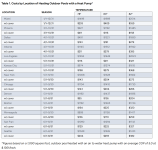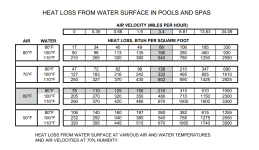I've been looking into installing a pool heater after using our pool for the first time last year. It's ~45-50K gallons and gets nearly full sun during the day on Long Island, NY. The pool is comfortable during the summer on sunny days (~78-80) but gets chilly after the sun sets. The curved L shape precludes a pool cover unfortunately. The pool company is pushing a 400k BTU natural gas heater, although I have to run a 200' gas line through the entire backyard. A few people have mentioned getting two heat pumps instead. I think that would get us up to around 280k BTU. We're not going in the pool unless it's at least 70 degrees outside, so I'm not trying to heat very cold water. Ideally we would keep the pool around 85 for the summer so we could go in after work and on weekends, which is why I'm leaning towards a heat pump. I assume I would need another electric line run to carry power for a dual heat pump situation, but that is likely much cheaper than a gas line. We don't have solar now but in ~10 years when the roof goes we'll get some panels.
Is this crazy compared to using a gas heater or will two heat pumps be able to accomplish what we're looking to do? Gas is only going to get more expensive, and heat pumps will continue to get more efficient, so I'd rather put in infrastructure for the future than regret I put in a gas line. It seems like running two heat pumps will still cost less than one gas heater. Appreciate any advice!
Is this crazy compared to using a gas heater or will two heat pumps be able to accomplish what we're looking to do? Gas is only going to get more expensive, and heat pumps will continue to get more efficient, so I'd rather put in infrastructure for the future than regret I put in a gas line. It seems like running two heat pumps will still cost less than one gas heater. Appreciate any advice!









